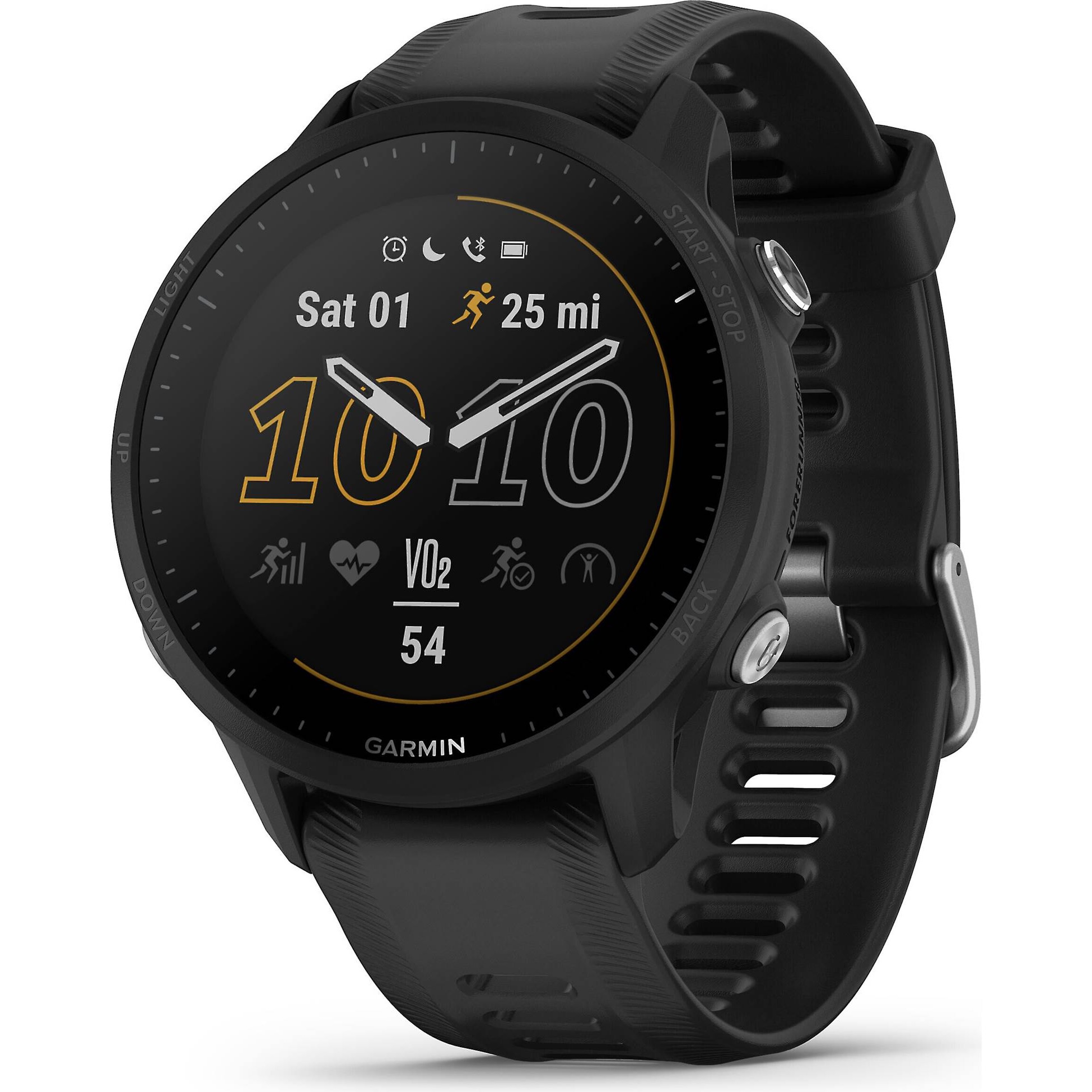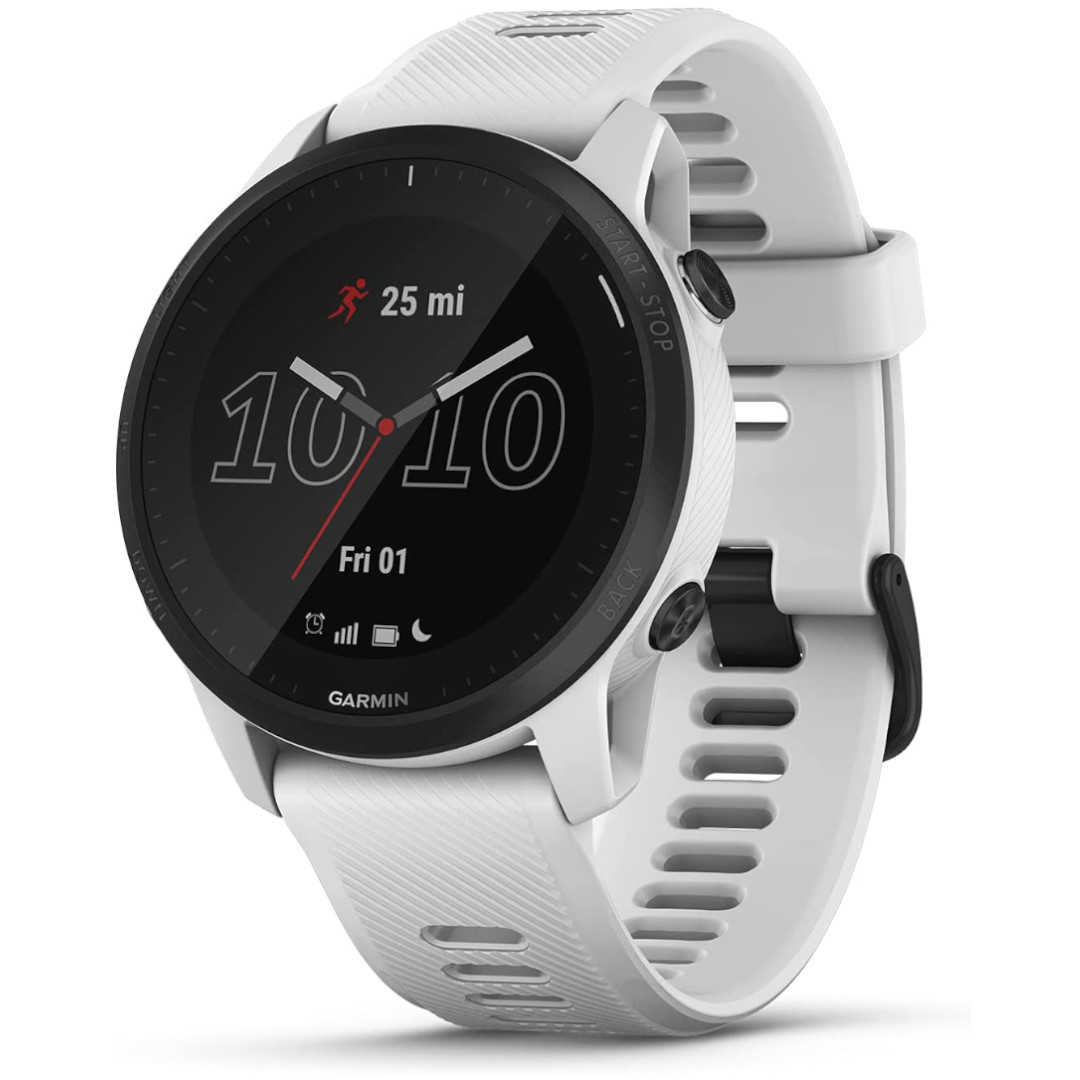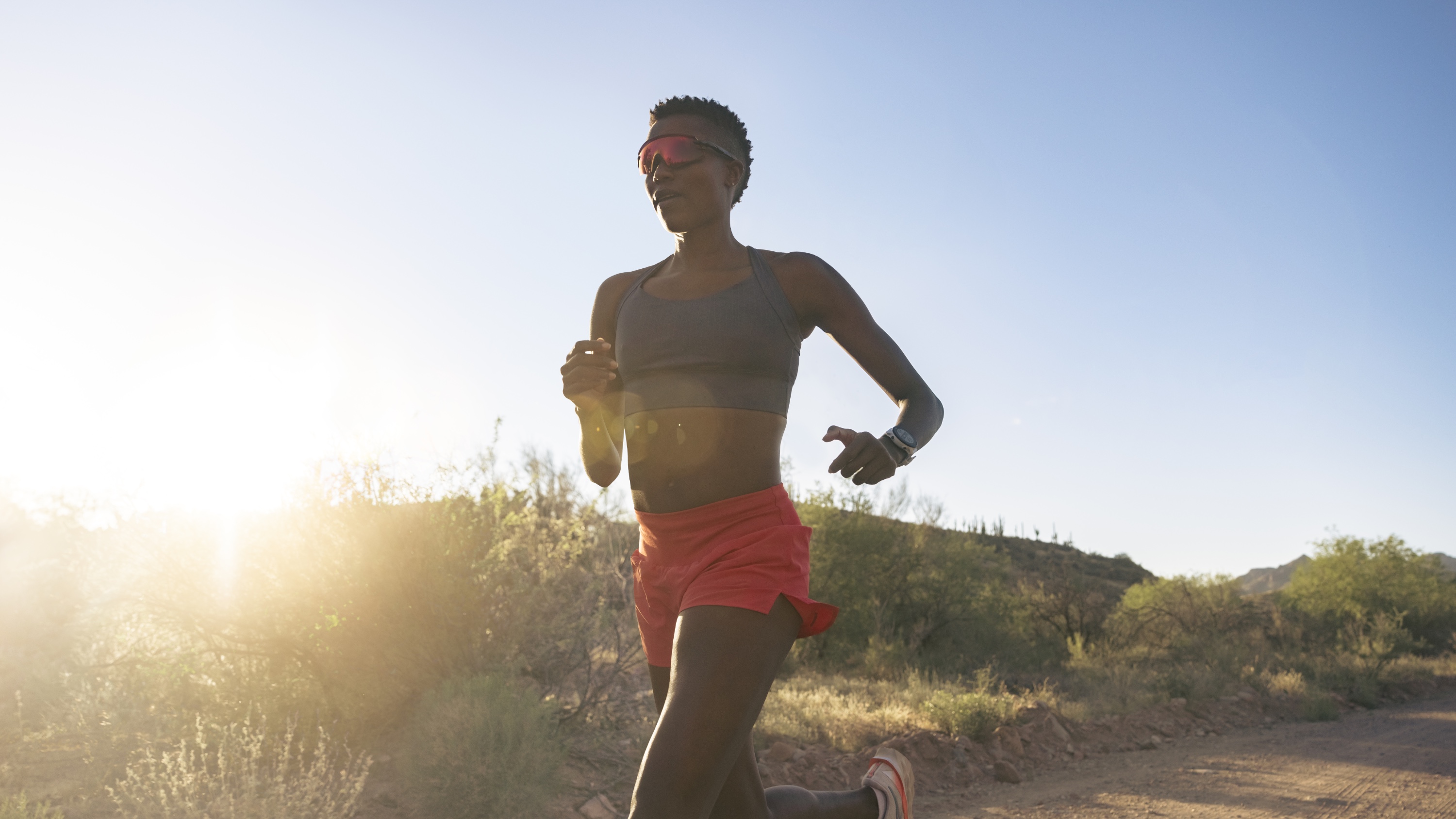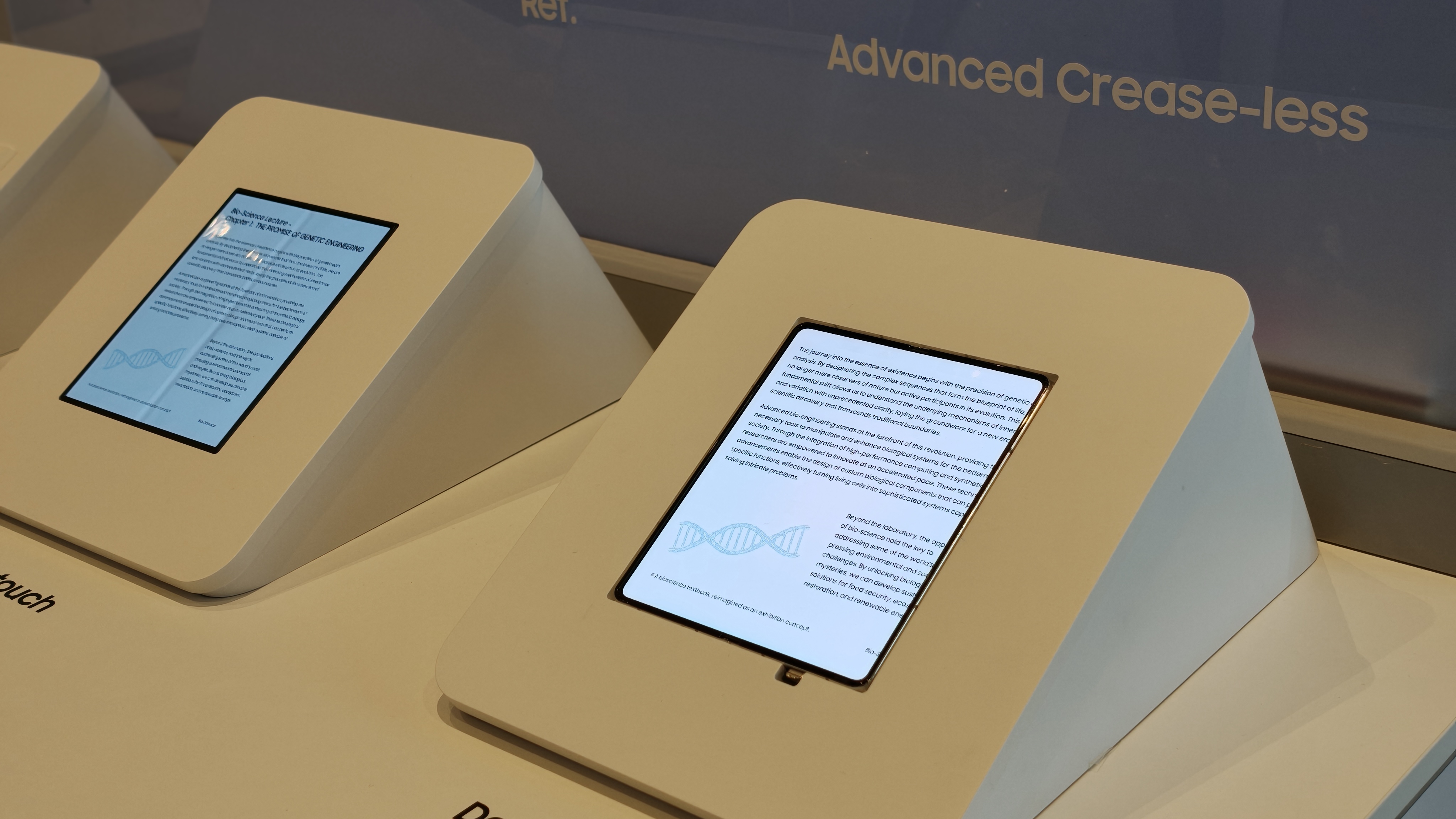Garmin Forerunner 955 Solar vs. 945 LTE: Which should you buy?
The Forerunner 955 has plenty of upsides over last year's model, whether or not you pay for the Solar panel.

Better health and location tracking
Garmin's 945-to-955 update made some significant improvements to tempt you into an upgrade; from dual button/touch controls, to pinpoint GPS accuracy. It gives pro runners all the data and metrics they need, including how to prepare for races and their current stamina levels during races.
Pros
- Touchscreen & 5-button nav
- Multi-band GPS accuracy
- Extra 6 days/ 14 hours of battery life
- New HRV data and real-time metrics
- Morning Report and Race Widget
Cons
- No LTE option
- Slightly heavier
- Solar upgrade doesn't help for some modes

Leave your smartphone at home
The Forerunner 945 LTE came out last year as one of the first with Garmin's new Elevate V4 sensor, and has 90% of the same features as the 955 with the added benefit of cellular data. While the newer model has plenty of upsides, the 945 LTE isn't obsolete by any stretch, and would be worth buying at a discount.
Pros
- Cellular data support
- Better battery life while playing music storage
- Slightly lighter
- Discounted frequently
Cons
- No touchscreen
- Shorter overall battery life
- LTE use cases are limited
One year after the Garmin Forerunner 945 LTE launched, Garmin released yet another premium fitness smartwatch in the Garmin Forerunner 955 and 955 Solar. Garmin made significant improvements to its premium runner's watch in that time, adding a touchscreen, better heart rate and GPS tracking, alongside new widgets and features. Despite the improvements, some people may still want to buy the older model instead.
Garmin Forerunner 955 Solar vs. 945 LTE: New features
Why you can trust Android Central

Our Garmin Forerunner 945 LTE review will break down the laundry list of useful running features available on the watch, far too many to list out here. At a glance, you get training suggestions, training effect and suggested recovery time, VO2 Max and current performance condition, full-color mapping with navigation and round-trip routing, emergency assistance, and Garmin Connect for watch faces and apps.
The Garmin Forerunner 955 offers all of these features, while also adding some new ones, which we'll briefly break down below:
All Garmin watches support three global navigation satellite systems (GNSS) — GPS, GLONASS, and GALILEO — but you only use one at a time, and if you're struggling to connect to a satellite, you're out of luck. The Forerunner 955 provides "multi-band, multi-satellite-system tracking" to drastically improve accuracy results.
You have two options: All Systems and All Systems Multi-band. The first option uses your three GNSS systems simultaneously, improving results but consuming more battery life. Multi-band burns even more battery by connecting to each system across multiple satellite frequencies, giving you dependable accuracy no matter where you are.

Along with the improved location accuracy, Garmin also made your watch more useful during a run. The Forerunner 945 LTE tells you once a run is over how the workout affected your stamina and fitness; the Forerunner 955 has a real-time stamina widget that warns you if you're overexerting based on your current energy levels.

Another new feature is Heart Rate Variability (HRV) Status. All Garmin watches track your HRV to measure your stress and Body Battery score, but the 955 does so more consistently while you sleep; giving you a seven-day and overnight HRV average, so you get a clearer sense of how well you slept and bounced back from your previous workout.
With this new info, the Garmin Forerunner 955 offers a Morning Report that combines your sleep recharge, HRV data, current weather data, training readiness, suggested workout, and other customizable info into one useful report.
When it comes to racing, the Forerunner 945 LTE can predict your likely pace using past runs, and offers Pace Pro to keep you on track during runs. Upgrading to the 955 also adds a Race Widget. You input the date, time, and location of your next race; the widget shows how many days are left and the predicted weather at the start, then changes your daily suggested workouts to take the timeline into account.
Lastly, the Forerunner 955 has "on-device Connect IQ store," which means you should be able to download new apps and watch faces directly on the watch, instead of having to upload them from the app on your phone.
All of these features don't just give the Forerunner 955 a leg up on the 945; it also will get the other top running watches sweating, because very few offer similar features to compete.
Garmin Forerunner 955 Solar vs. 945 LTE: Battery life

Most people would assume from its name alone that the Garmin Forerunner 955 Solar would handily beat the cellular-backed 945 LTE in this category. But thanks to the addition of a touchscreen and multi-band GPS, it's much more of a competitive race than we expected.
| Battery life | Garmin Forerunner 955 Solar | Garmin Forerunner 945 LTE |
|---|---|---|
| Smartwatch mode | 15 days / 20 with solar | 14 days |
| GPS-only | 42 hours / 49 with solar | 35 hours |
| All systems GPS mode | Up to 34 hours | 🚫 |
| All systems + multi-band GPS mode | Up to 20 hours / 22 with solar | 🚫 |
| GPS with Music | Up to 10.5 hours | 12 hours |
| All systems + multi-band with music | Up to 8.5 hours | 🚫 |
| GPS with LTE LiveTrack | 🚫 | 10 hours |
| GPS with LTE LiveTrack and music | 🚫 | 7 hours |
As the table shows, the Garmin Forerunner 955 beats the 945 LTE by just one day, with an additional 5 days if you spend about three hours a day outdoors in decently sunny conditions with the Solar Panel. You also add seven GPS hours over the 945 LTE with the non-Solar version, and an additional seven with the Solar upgrade.
Once you start using more advanced GPS tracking, the Forerunner 955 dips well below the 945, and for whatever reason, the Solar panel only barely seems to mitigate this. And for GPS-only tracking with music, the 945 LTE beats the 955 Solar by one and a half hours. Of course, if you use LTE tracking, you'll see a similar battery performance drop with the older model.
Overall, you can argue the Garmin Forerunner 955 Solar's six-day boost is most useful for handling standard health tracking all day and night. The standard model gives you plenty of GPS battery, and appears to handle multi-band and music exactly as well as the upgraded model. The Garmin Forerunner 945 LTE, meanwhile, can last nearly as long despite a slightly smaller, lighter build because it doesn't have a touchscreen.
Garmin Forerunner 955 Solar vs. 945 LTE: Specs

The Garmin Forerunner 955 shares a similar design to its predecessor, with a few key differences. Basically, the newer model is slightly larger and heavier than before, with a display that's 0.1 inches larger. Otherwise, it has the same Elevate V4 HRM and Pulse Ox sensor, plus the same Gorilla Glass and water protection.
| Category | Garmin Forerunner 955 Solar | Garmin Forerunner 945 LTE |
|---|---|---|
| Display | 1.3-inch (33mm) MIP touchscreen | 1.2-inch (30.4mm) MIP non-touch |
| Resolution | 260x260 | 240x240 |
| Protection | Gorilla Glass DX; 5ATM | Gorilla Glass DX; 5ATM |
| History | 32GB | 200 hours |
| Tracking | GPS, GLONASS, Galileo, heart rate monitor, barometric altimeter, compass, gyroscope, accelerometer, thermometer, pulse ox, multi-frequency positioning | GPS, GLONASS, Galileo, heart rate monitor, barometric altimeter, compass, gyroscope, accelerometer, thermometer, pulse ox |
| Solar charging | ✔️ | 🚫 |
| Cellular | 🚫 | ✔️ |
| Dimensions | 46.5 x 46.5 x 14.4mm | 44.4 x 44.4 x 13.9mm |
| Weight | 53g | 49g |
Will 0.15 ounces make a big difference? Probably not, but the Forerunner 945 LTE is already fairly hefty, so this slight increase could annoy you. But on the flipside, that slight display upgrade with extra pixels will make it easier to read and enjoy the full-color maps and workout data.
You'll also receive extra storage with the newer watch. Our Forerunner 945 reviewer found it could store 1,000 songs, while 32GB of storage should give you about double that.
The most obvious upgrade, of course, is the addition of a touchscreen. The 955 still offers Garmin's traditional 5-button design, which includes two buttons for scrolling up and down. But you can also swipe and tap to navigate through data, if you prefer.
We enjoyed having both options with the Garmin Venu 2, though that has a much better AMOLED display. That aside, most people will appreciate having the touch option for casual use and more reliable button navigation during workouts. If you prefer relying on buttons entirely to avoid accidental presses, maybe the 945 series is a better fit for you.
The only 945-exclusive feature is cellular LTE data. While the Forerunner 955 offers Livetrack so people can track your GPS path, and an option to call your emergency contact if you're injured, it only works if you run with your phone. The 945 LTE gives you the option to leave your phone at home without losing access to your safety features and notifications.
On the other hand, you can't use LTE to make calls, stream music, or use the common apps available on Android smartwatches. It's a fairly niche tool that may not be worth losing all the other 955 perks.
Which Forerunner should you buy, or should you upgrade?

If you already own the Garmin Forerunner 945 or 945 LTE, take another close look at the list of new features and the spec differences. We're pretty impressed with the year-over-year improvements like the touchscreen, improved overall battery life, new GPS tracking tools, storage increase, and data-collecting widgets for both before and during races.
But is all that enough to justify spending another $500-$600 on the new model? Maybe if you can find a great trade-in deal on your current watch, and don't mind lugging your smartphone around with you. Otherwise, you can probably make do with your current model and use it to get fit.
For anyone buying a new model, however, we have to recommend the Garmin Forerunner 955 for all the reasons above, as it will easily number among the best Garmin watches, thanks to the sheer number of features. So then your only question becomes whether you need the $100 solar panel upgrade, which helps for day-to-day longevity, but not as much for heavy-duty users relying on multi-band GPS.

Shining bright
The newest Forerunner flagship adds a solar option for squeezing out a few more days of charge, but even the base 955 gives you a significant upgrade over last year's model. So long as you're okay with keeping your phone with you during runs, it's definitely the stronger pick.

Stay safe
Garmin's LTE option doesn't offer many "smart" watch upgrades besides simply letting other people track you from afar and offering a lifeline in an emergency. But for those who run alone without a phone, this could prove a vital tool that makes it worth forgoing the 955's other upsides.
Get the latest news from Android Central, your trusted companion in the world of Android

Michael is Android Central's resident expert on wearables and fitness. Before joining Android Central, he freelanced for years at Techradar, Wareable, Windows Central, and Digital Trends. Channeling his love of running, he established himself as an expert on fitness watches, testing and reviewing models from Garmin, Fitbit, Samsung, Apple, COROS, Polar, Amazfit, Suunto, and more.
